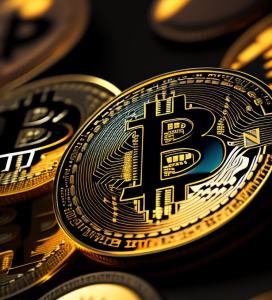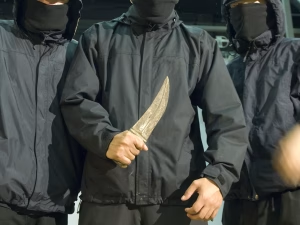In layman’s terms, what is a non-fungible token (NFT)?
An NFT is a unique crypto token represented on a distributed ledger (blockchain). This technology allows the tracking of ownership and transaction history of each NFT with absolute certainty and finality. Unlike other crypto tokens which are interchangeable (i.e. fungible), NFTs are non-fungible, with each token assigned a token ID and distinctive metadata associated with it. It can be seen as a certificate of ownership which can be linked to intangible digital assets such as digital art or media, but also to real world physical assets as well.
As a relatively new form of digital media, how far is the creation and trading of NFTs covered by existing IP law?
While the technology of blockchains and tokens is rapidly evolving, the underlying intellectual property (IP) rights associated with NFTs can be analogised to existing IP legal frameworks. For example, Section 106 of the US Copyright Act provides copyright owners with exclusive rights to reproduce, display, copy, prepare derivative works and distribute copies of the underlying work. NFTs have two components: the ownership of the token itself and the ownership of the IP rights to the underlying content linked to the NFT. For NFTs that may contain unauthorised elements in the underlying media, the analysis of fair use would be applicable, including the transformative nature of the work and other established fair use factors.
One of the challenges will be how the traditional IP “bundle of rights” is defined in relation to NFTs and who has the right to create (i.e. “mint”) NFTs containing such IP. This is especially relevant for holders of large IP portfolios and for works with multiple authors.
While the technology of blockchains and tokens is rapidly evolving, the underlying intellectual property (IP) rights associated with NFTs can be analogised to existing IP legal frameworks.
What are the legal obstacles to the creation and sale of NFTs?
IP rights holders should undertake a legal analysis to ensure that all associated rights are clear before moving forward with minting and selling NFTs. In the case of a single artist creating an original work of art for example, the analysis is straight forward. However, if the underlying asset is comprised of many different rights contractually acquired, for example a clip from a feature film, the analysis must take into account all the various rights embodied in the clip and applicable guild/union considerations. Rights of publicity and likeness as well as moral rights of authors are also potential legal considerations that should be made depending on the underlying content of the NFT.
It is also important to make sure the NFT sale and incentive structure – as well as the marketing of the NFT – is not deemed an unlicensed security. Generally, if the NFT features completed artwork and its value is inherent in the completed work, this should not be considered a security under US law. If the NFT is marketed as an investment opportunity or is incomplete with additional work to be done by third parties to increase the value of the NFT, this could be deemed a security and subject to US securities laws.
Who owns the IP rights of a piece of art or other content attached to an NFT and what proprietary rights are transferred upon a sale of an NFT?
This depends primarily on the nature of the NFT being sold and the rights that the underlying IP owner wants to convey via the NFT. Typically for NFTs associated with art or digital media, the author of the original IP retains the underlying copyright and the NFT holder only owns the digital representation associated with the NFT along with personal rights to display the media. Just like when a buyer acquires a physical artwork from a gallery, the buyer may display the physical work in a personal manner, but does not acquire the underlying rights to commercial reproductions or to make derivative works of the purchased piece. The terms of the license associated with the sale of the NFT usually determines what IP rights the purchaser acquires.
IP rights holders should undertake a legal analysis to ensure that all associated rights are clear before moving forward with minting and selling NFTs.
Bored Ape Yacht Club (BAYC) is an example of a top NFT project (10,000 artwork collectibles with over $250 million in sales trading volume for September 2021) that granted its NFT owners the right to create derivative works and commercialise the artwork associated with their respective NFT. In at least one instance, a Hollywood agency represents the underlying IP of a BAYC NFT and is shopping opportunities in film, television and podcasting based on the ape character associated with the NFT.
NFTs are written with software code (aka “smart contracts”) that help govern:
- the ownership and transferability of the NFT;
- where the linked content file is located (e.g. content files often reside “off-chain” via third-party decentralised file storage services such as IPFS or Arweave), and;
- royalty streams (e.g. creator receives a percentage of all secondary market sales of the NFT).
Currently, each individual NFT platform implements its own creator royalty standard, thereby creating a lack of compatibility; a cross-platform NFT royalty token standard will ensure creators receive royalties as originally intended across all NFT platforms and marketplaces.
To what extent are NFTs susceptible to “copyfraud” or “copycats”?
This is one of the biggest challenges in the NFT space today. The enforcement of IP rights is inevitable and will likely be shaped by future legal challenges in the space. We have already seen signs of this with one of the biggest blue-chip NFT projects, CryptoPunks (10,000 pixel art characters with over $1 billion in total trading sales volume). Larva Labs, the creator of CryptoPunks, sent a takedown notice under the Digital Millennium Copyright Act to OpenSea (the largest NFT marketplace platform) regarding PolygonPunks, a copycat project on the Polygon “Layer 2” sidechain. After an initial removal of the project by OpenSea, the project was re-listed several weeks later and available again for trading. So far, it does not appear that Larva Labs has filed an infringement claim against PolygonPunks. OpenSea attempts to help buyers identify official NFT projects with a “checkmark”. However, buyers may still encounter unauthorised and infringing collections side by side with the official collection, and it is up to the buyer to conduct adequate diligence before buying.
The enforcement of IP rights is inevitable and will likely be shaped by future legal challenges in the space.
OpenSea’s terms and conditions make it clear that despite the official-looking checkmarks, it does not actually verify the identity, legitimacy or authenticity of any NFT sold on its platform. It appears that courts will need to eventually step in to settle many of these IP disputes that are already present in the space. However, issues from proper jurisdiction to simply identifying the responsible party may present obstacles for formal legal claims.
What developments do you expect to see in this area of intellectual property, from both a business and a regulatory point of view?
A growing trend in the NFT space is the emergence of decentralised autonomous organisations (DAOs). An oversimplified definition is that DAOs are online communities that share a bank account (typically through some kind of multi-signature electronic wallet) and allow community members to collectively govern and pool their resources (financial and labour) together towards a common purpose. DAOs have sprung up to collectively buy high-priced NFTs or to fractionalise ownership of NFTs, ranging from digital assets to real-world assets. PleasrDAO’s recent acquisition of the Wu-Tang Clan album “Once Upon A Time In Shaolin” provides collective ownership of the physical one-of-a-kind album represented by NFTs for each of its members. These evolving community models will impact businesses dealing with intellectual property rights and the traditional corporate structure, but may also draw scrutiny from securities regulators.
[ymal]
Blockchain technology and NFTs have enabled creators to capture value in a way that was not previously possible. This will create paradigm shifts in many creative industries, including for example the music industry, where there is currently a large gap between the value capture of fan community support and artist monetisation. NFTs are changing the dynamics of the value of IP rights, the relationship between creators and their communities, and enabling the creation of wealth in unexpected and non-traditional ways.
Addison Liu, Attorney
1100 Glendon Avenue, 17th Floor, Los Angeles, CA 90024
Tel: +1 310-689-7291
Film & Ink is a law firm that focuses on guiding clients through the integration of media with technology, representing both established studios and streaming services on live action and animated projects for television, theatrical, and digital platforms. Founded in 2005, the firm also provides general counsel services to growing companies on day-to-day legal matters such as contract review and negotiation, employment issues, regulatory compliance, and marketing issues in both traditional and digital formats.
Addison Liu represents a wide range of clients in music, art and entertainment with a focus on production and music agreements for feature film, television, and digital productions. He routinely provides legal advice on content distribution and intellectual property licensing strategies for new emerging technologies. In addition, he has experience in a wide range of marketing and advertising issues relating to music, art and design. Besides his legal practice, he is also the co-founder of HVW8 Art + Design Gallery with locations in Los Angeles and Berlin.





















